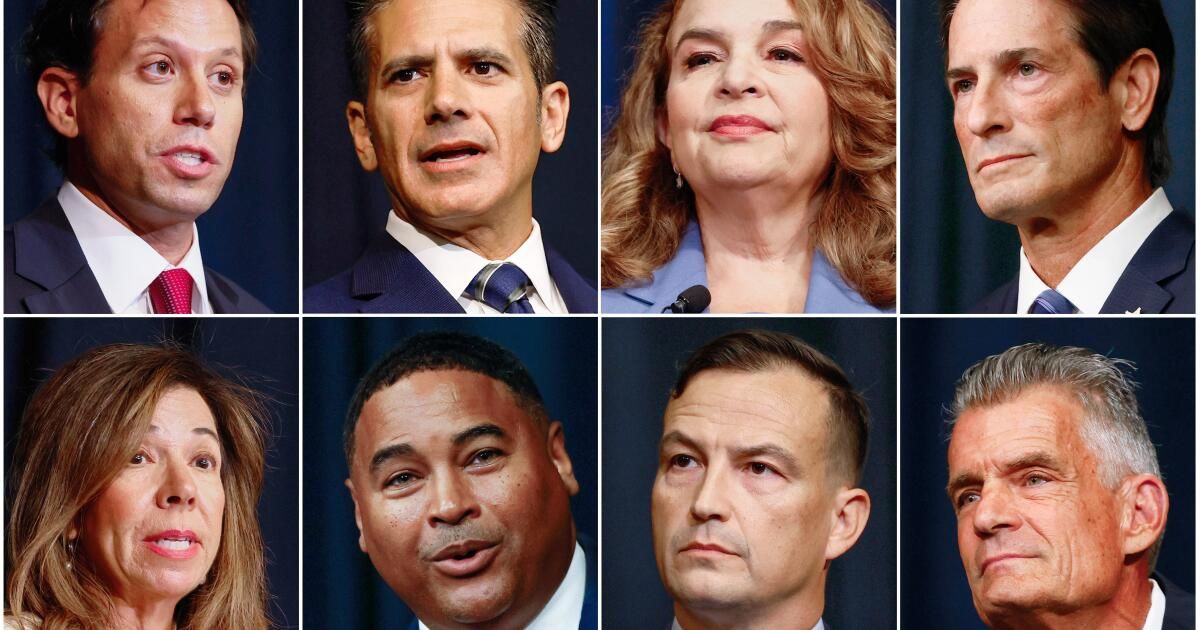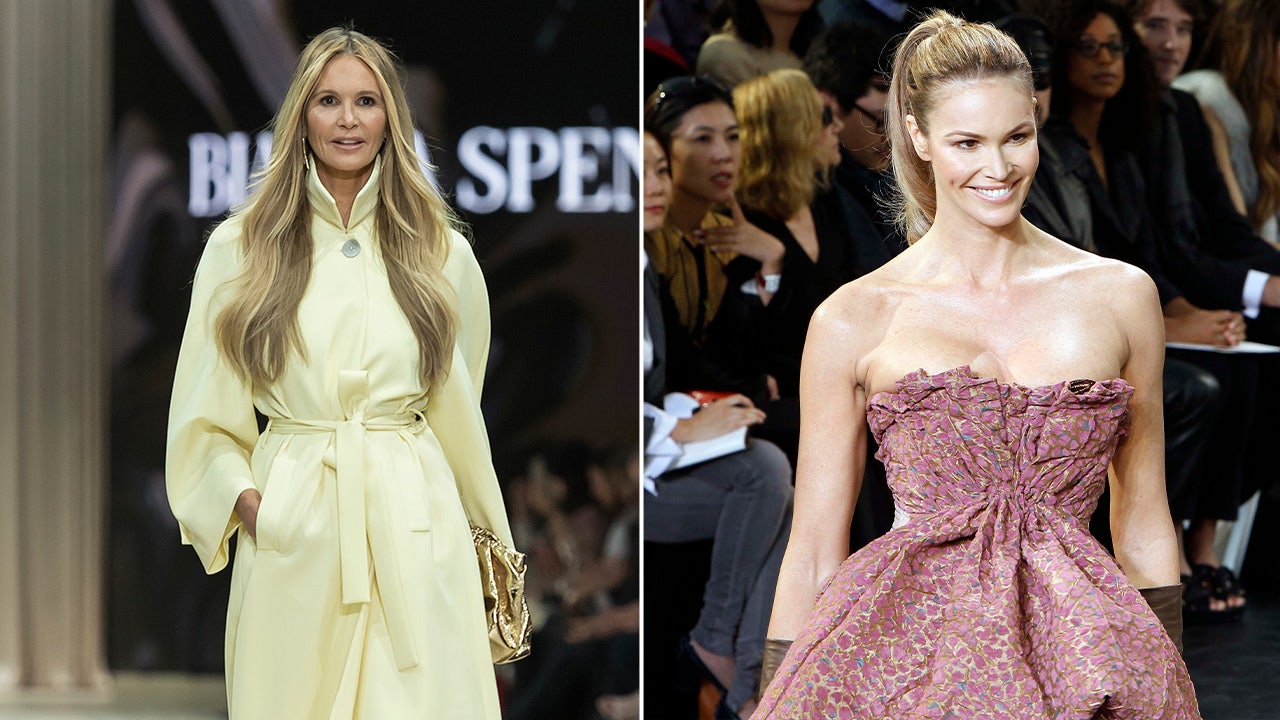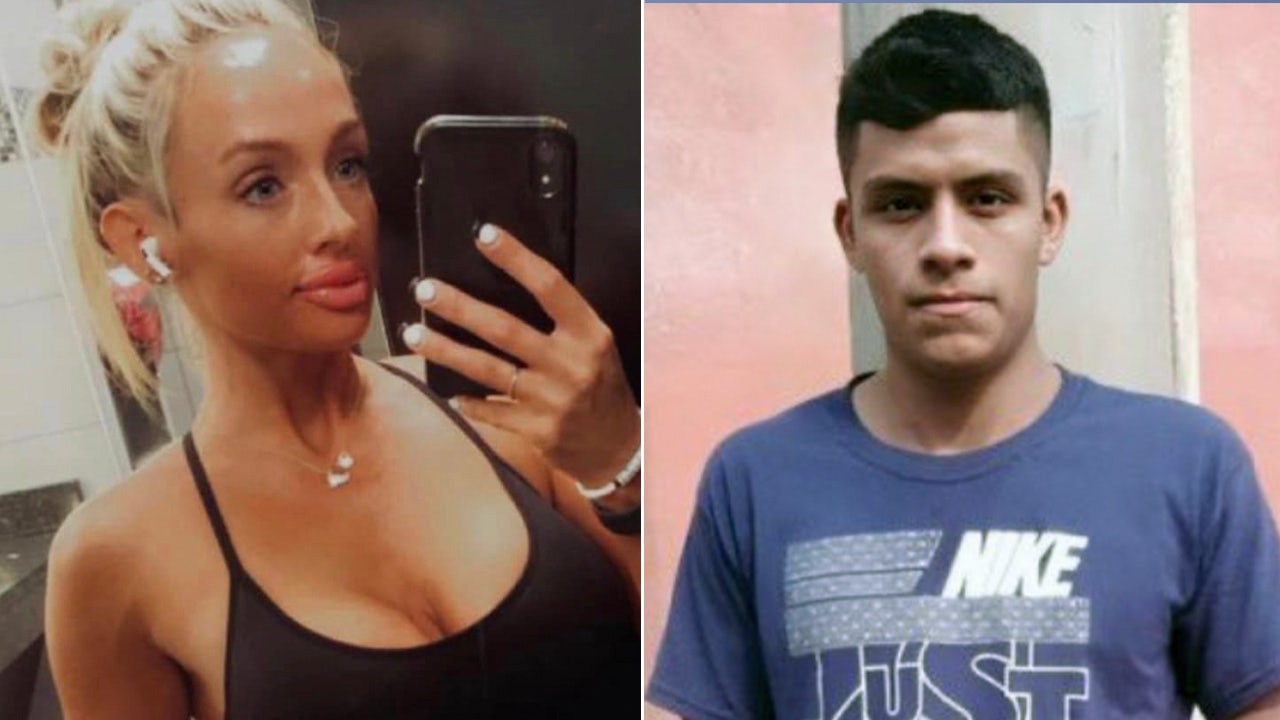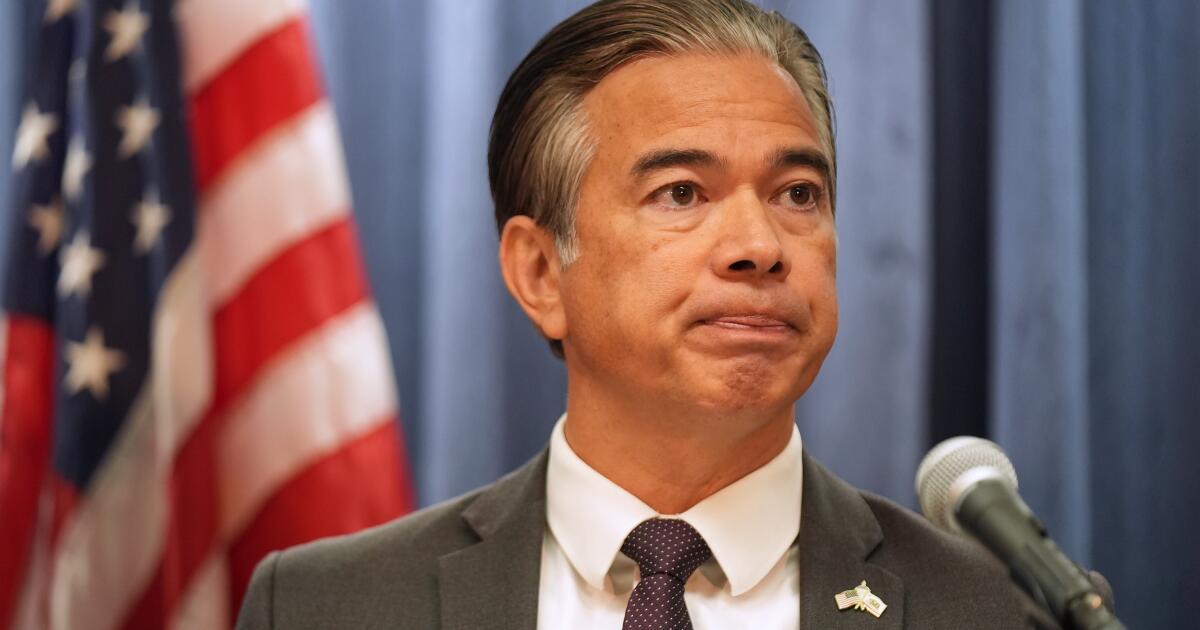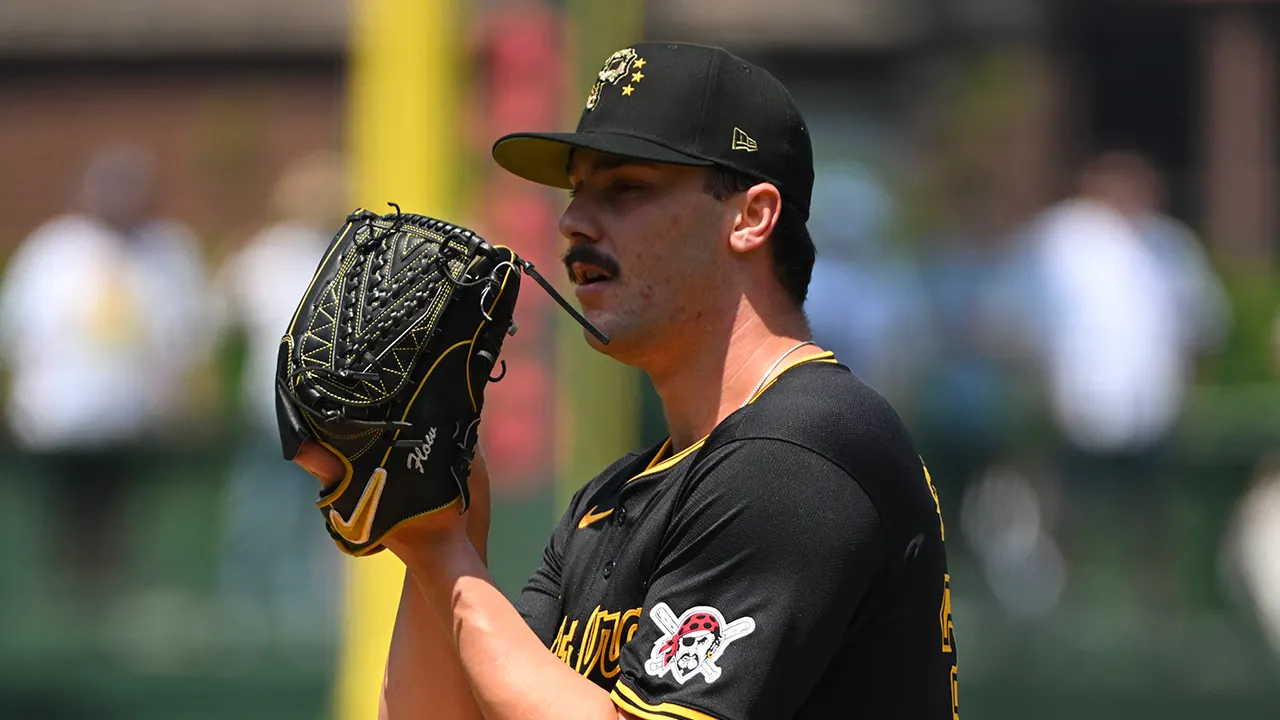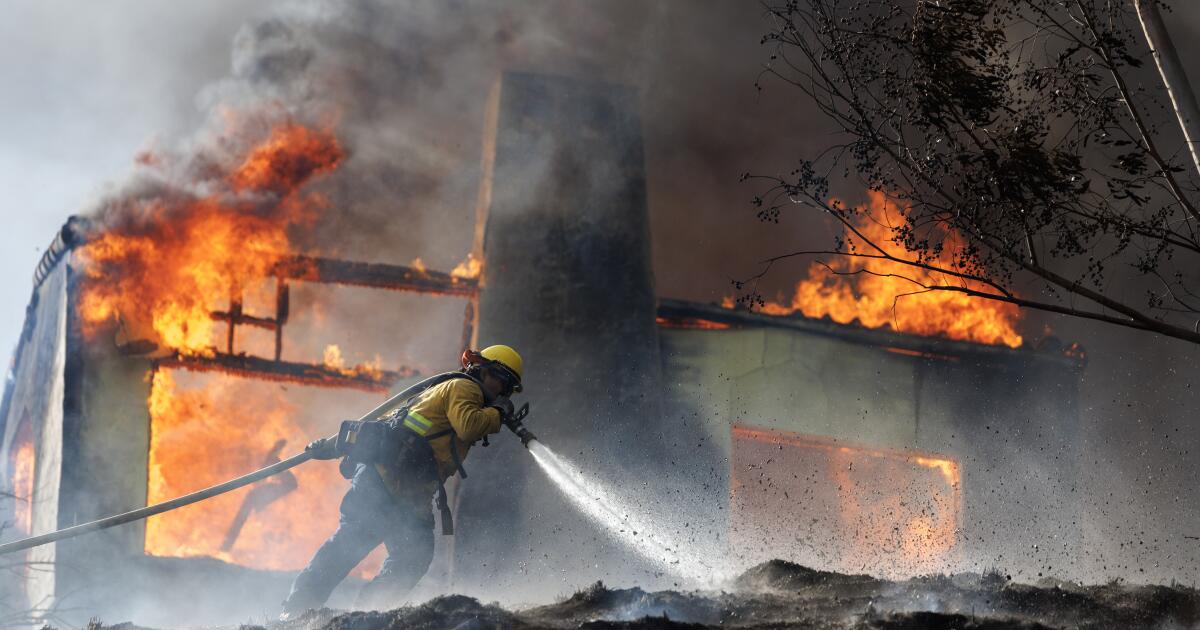The ads begin with a stirring violin track, as the subject walks confidently in front of the Broadway facade of the Los Angeles County Hall of Justice, or the Temple Street facade of the United States Courthouse, or the tower Art Deco of the Town Hall.
A piano swells beneath the strings as the star salutes first responders, working families or the homeless.
For the record:
5:28 pm February 24, 2024An earlier version of this story concerned the district deputy. Lawyer. María Rodríguez in a single instance. The candidate's name is María Ramírez.
The screen shows a drone shot of downtown, a quick cut to a close-up of the Los Angeles County district. Lawyer. George Gascón, and then a grainy CCTV video of one of the most talked-about criminal trends in America: “smash and grab.”
If those commercials look familiar, it's because Los Angeles County's 5 million registered voters are being bombarded with campaign messages that tend to follow a similar script.
The March 5 primary race for district attorney is the most crowded race in the office's 174-year history, with 11 candidates vying to unseat Gascón as Los Angeles' top cop. And yet, in a race defined by the struggle to stand out, the ads flooding YouTube, Instagram and Facebook look almost identical.
The challengers include the district deputy. Lawyers. Jonathan Hatami, María Ramírez and Eric Siddall, defense attorney Nathan Hochman and Judge Craig Mitchell, all of whom have posted ads with the same notes.
Former U.S. Attorney Jeff Chemerinsky, Deputy District Attorney. Lawyer. John McKinney and Judge Debra Archuleta use the same music, wide aerial shots and quick cuts to crime videos, but they skip the cheerful walk downtown.
Experts say video ads are essential to reaching the Los Angeles County electorate, which is larger than voter rolls in most U.S. states, including those that decided the 2020 presidential election in Arizona, Nevada, Minnesota and Wisconsin. The race for district attorney has pushed fundraising to match the office's high profile, and candidates are pouring money into their political positions.
“If you're trying to reach millions of voters, the most effective and cost-effective way is to make a video and post it on social media,” said Hrag Yedalian of Blue State Campaigns, a political consulting agency that has worked with several local candidates. including Mitchell.
But Yedalian said that in the rush to produce content and avoid controversy, “a lot of these political videos are one of two things: They're either really predictable or they're boring, and often they can be both.”
There are many ways to frame a powerful pose or repackage a viral crime video on a cell phone, and a limited selection of royalty-free classic tracks labeled as “inspiration” on information-sharing sites used by advertising producers.
So in a field of 12 politicians fighting for the same position, some aesthetic overlap is inevitable.
But the Los Angeles announcements are dramatically more similar to each other than those from prosecutors in Manhattan, San Francisco, Portland, Oregon, Houston or Chicago, all major metropolitan areas with contested races and similar public safety concerns, in one year. election in which crime is a problem. political reference.
For one thing, local places are much classier.
“Being in the Los Angeles area, we are held to a higher standard,” said Emrys Roberts, director of photography for the Mitchell ad.
The judge's video, which was inspired by work for sports brands, is now a finalist for the political advertising industry's prestigious Reed Award.
“We analyze: What is Nike doing? What is Asics doing? said Yedalian, who came up with Mitchell's place. “This is not a campaign ad; “It is a short documentary about the realities of Los Angeles and what the judge is doing to combat them.”
In some ways, the district attorney race ads reflect the state of American political theater in the movie capital of the world, where rivers of campaign cash flow in and out of Hollywood each election cycle.
Challengers have already raised about $6.6 million, compared to $4.3 million raised before the 2020 primary.
Now, campaign finance records reviewed by The Times show, candidates are racing to spend it.
Hochman has already spent $400,000 on television airtime in the run-up to Super Tuesday. Hatami paid at least $10,000 to the cinematographer who photographed his campaign ads. And Siddall shelled out about $1,700 to rent emergency vehicles and related equipment at Cop Shop LA, the same concern that graces many police procedurals and music videos.
But those outlays alone don't tell the whole picture.
“The question is not just whether you can create a compelling ad,” said Sarah Robinson of J&Z Strategies, who works with Siddall. “The important thing is that your message can persuade a voter.”
Even insurgent campaigns now typically spend tens of thousands of dollars on market research alone, totals that can equal or exceed what they spend on advertising.
“Our polls are our north star,” Robinson said.
It's the second reason the ads are so similar: They're designed to match data about what resonates with voters.
Siddall has spent about $50,000 on surveys, campaign records show. Ramírez has disbursed approximately $30,000 and Chemerinsky nearly $40,000.
Polls show that Angelenos are increasingly concerned about public safety, despite a dramatic decline in violence over the collective lifetime of the electorate.
The youngest voters in this election were born in 2006, the last year in which more than 1,000 homicides occurred in Los Angeles County. A little more than a decade ago, when many of today's parents were in elementary school, that number was more than 2,500.
But as violent crime hovers around record lows, a combination of growing street homelessness, record overdose deaths and rising property crimes has many voters saying safety is their top concern.
“If you look at any of the surveys that have been done in the last six months, the top three issues are homelessness, crime and affordability,” Yedalian said.
Robinson agreed.
“We see election after election; there are always big, prominent messages,” the consultant said. “In 2018 it was healthcare; in 2020 it was the pandemic. [This year] “We are seeing homelessness, cost of living and robberies.”
Both organized retail theft and the proliferation of encampments contribute to a perception of lawlessness, surveys show, regardless of whether they threaten ordinary Angelenos or can be mitigated by the district attorney alone.
The feeling that the top prosecutor ought Doing more to solve those problems has helped fuel Gascón's current crisis and swell the ranks of its rivals. Less than a quarter of voters now approve, according to a recent USC-Dornsife poll.
This brings us to the third reason why most ads look alike: they all share the same heel.
“Everyone is not competing against each other, but against Gascón, so what everyone wants is: 'We want to be tough on crime,'” Yedalian said.
But while Gascón may be the man to beat on Super Tuesday, his rivals have yet to prove themselves heroes, whether on screen or in the polls.
“If you're just getting the message that you shouldn't vote for George Gascón… that's wasted money,” Robinson said.
It's a point that cold case prosecutor Lloyd “Bobcat” Masson exploits in his latest video, the fourth in a series of DIY hits that look more like ads for a personal injury lawyer than something for a political campaign. .
“My budget is much smaller, so there's no way I can compete with mass advertising,” Masson said. “We wanted to do something with viral capacity.”
Instead of a traditional ad, he and a friend put together a series of property crime sketches with just a car and two actors, plus an exhaust resonator meant to replace a stolen catalytic converter.
This week, he released a fourth video, this one set in the cleaning aisle of a corner store.
“Why are there so many options?” growls one actor, examining a rack of spray bottles, all identical except each named after a different Gascon challenger. “They all look the same.”

